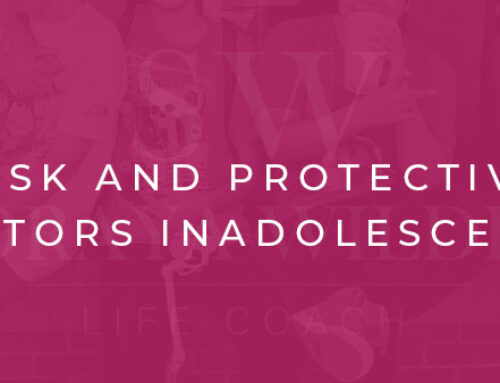Counseling Theories and Techniques
Development and maintenance of the client’s presenting problem
Everyone experiences the occasional anxiety and panic attacks at one time or another, and it is a normal human experience and emotional and protective response system. Certain events or situations may trigger normal anxiety and panic occasionally. There are differences between anxiety attack and panic attack. A panic attack or fear is a response to an external, known threat. Anxiety is a reaction to an internal unknown threat such as excessive worrying an imminent danger, real or not. For some individuals, anxiety and panic become problematic or disordered when the symptoms are frequent, chronic, irrational, and interferes with many life functions causing family, work, and social difficulties (Ankrom, 2018a; NIMH, 2018). DSM-5 (APA, 2013 p. 189) includes in Anxiety Disorders a large group of disorders that share features of excessive fear and anxiety.
DSM-5 (APA, 2013 p. 208) describes Panic Disorder (PD) as sudden surges of intense fear or discomfort, occurring from a calm state or an anxious state, that intensifies significantly within minutes. For a client to be diagnosed with PD, the attack must be accompanied with at least four of the following symptoms: palpitations or accelerated heartbeat, abnormal sweating, trembling or shaking, feeling shortness of breath or smothered, feelings of choking, chest pain or discomfort, nausea or abdominal pain, dizziness or faintness, chills or hot flashes, numbness or tingling sensations, derealization or depersonalization, fear of losing control or “going crazy”, and fear of dying.
Psychodynamic model recognizes a relationship between clients’ present psychological functions and their childhood experiences. Therefore, clients’ psychological characteristics and their biological and psychological construct interacting with their environmental factors are the major contributing factors to the formation of their syndrome (Khodayarifard, et. al, 2009 p. 2). Busch & Milrod (2009 p. 30) explain that anxiety as a maladaptive defense against unconscious conflicts. Freud distinguished between two types of anxiety: “traumatic anxiety” which is fear of real danger during a traumatic experience, and “signal anxiety” which is fear arising from anticipation of psychologically meaningful dangers to occur again, thus, activating defensive processes. To resolve unconscious conflicts, Psychoanalysis attempts to make the client aware of their inner conflicts. Each client’s anxiety disorder can only be understood within the context of them and their individual experiences. Therefore, only with understanding the meaning of their anxiety and addressing the underlying causes of the pain the defense mechanisms are used to cover, can the client overcome his/her anxiety.
According to Psychodynamic Theory, clients’ anxiety and panic disorders are the result of triggered defenses that act unconsciously to ward off potential dangers based on fantasies rather than reality (Busch & Milrod, 2009 p. 32). Anxiety can be explained as an unconscious response to triggers that have developed over the years. Wong (1999 p. 823) explains that the combined activity of childhood wishes and dangers including overwhelming excitation, loss of object (separation), loss of love, castration, and guilt (superego) provoke signal anxiety. Anxiety disorder is the result of activation of any of these wishes and associated dangers that occur via symbolic or associative links.
Behavioral Theory suggests that anxiety and fear are learned through paired association and reinforced through avoidance and escape. Clients’ anxiety and panic disorder can be explained by the theory of Classic Conditioning, and Operant Conditioning. Classic Conditioning is the association of an unconditioned stimulus producing a particular response to a neutral stimulus producing the same response as the unconditioned stimulus. The repeated pairing of the neutral stimuli with the unconditioned stimulus can alter the neutral stimuli to conditioned stimuli leading to tremendous fear which becomes a conditioned response. Operant Conditioning is the relation of behaviors on certain rewards and consequences. Reinforcements and punishments are two major concepts of Operant Conditioning. When reinforcements and punishment are applied after a behavior is executed, they cause the rate of behavior to increase or decrease (Jacofsky, et. al, n.d.-a).
Cognitive Theory describes fear as a primitive automatic neurophysiological state of alarm which warns individual of an imminent threat. Panic disorder is when an individual has panic attacks with feelings of terror that strike suddenly and repeatedly with no warning. Anxiety is the result of distorted, irrational, negative and catastrophic thought patterns leading to extreme emotions which prompt maladaptive behaviors. is a complex cognitive, affective, physiological and behavioral response system activated by anticipation of frightening circumstances. Anxiety disorder is when an individual excessively perceives anticipated events or circumstances as frightening because they are perceived to be unpredictable, uncontrollable, and pose a threat to safety, health, or happiness of the individual (Clark & Beck, 2010 p. 5). Clients’ abnormal fear and anxiety result from false assumptions of circumstances perceived as dangerous when they are not in actuality, and faulty or exaggerated interpretation of threat to an anticipated situation or circumstance are perceived threating to the individual’s safety and health. “The activation of dysfunctional beliefs (schemas) about threat and associated cognitive-processing errors leads to marked and excessive fear that is inconsistent with the objective reality of the situation.” (Clark & Beck, 2010 p. 6).
Treatment recommendations
Psychodynamic psychotherapy
Studies have found psychodynamic psychotherapy to be an efficient method of treating panic by creating therapeutic changes in the mental functioning of the person who suffers from the disorder. An effective treatment includes not only treatment of the symptoms, but also the modification and improvement of factors which contribute to vulnerability of the client to the disorder. “Psychodynamic psychotherapy, focusing on the role of unconscious ideas, impulses and factors, free association and analysis of transference can successfully control and treat the panic disorder syndrome.” (Khodayarifard, et. al, 2009 p. 2-3).
Treatment recommendation for Psychodynamic model to treat Anxiety and Panic Disorder is Panic-Focused Psychodynamic Therapy (PFPP). PFPP is a form of treatment for panic disorder based on certain psychoanalytic concepts including the existence and centrality of the unconscious, the relation of defense mechanisms and conflicted wishes to symptom formation, differences between signal and traumatic anxiety, and the importance of transference phenomena. The aim of PFPP is to target core conflicts about anger recognition, ambivalent feelings about autonomy, and fears. Painful emotions hidden in the unconscious mind by the defense mechanisms can be brought in to the conscious mind, they can be dealt with and the symptoms of panic disorder and associated behaviors can be eliminated or reduced (Ankrom, 2018b; Busch & Milrod, 2008). As clients recognize the relations between their present behavioral patterns and childhood events, they will be able to gains control of their vulnerability to panic (Khodayarifard, et. al, 2009 p. 2-3).
Cognitive behavioral therapy
Considered as the gold standard in the psychotherapeutic treatment of anxiety disorders, Cognitive Behavioral Therapy (CBT) has been found by several studies as highly efficacious. CBT aims to identify and challenge the client’s negative thinking patterns that are responsible for sustaining or causing the anxiety and panic disorders. Implementing CBT, clients will be enabled to recognize their negative thought patterns, they can look at their fears more realistically and distinguish the severity of the fears as irrational. “CBT for panic disorder typically involves education about the nature and physiology of the panic response, cognitive therapy techniques designed to modify catastrophic misinterpretations of panic symptoms and their consequences, and graduated exposure to panic-related body sensations and avoided situations.” (Otte, 2011 p. 416).
The core elements of CBT include psychoeducation, cognitive restructuring, self-monitoring, interoceptive exposure, and situational exposure. Psychoeducation is considered a significant part of CBT, it would help Soraya understand the nature and course of anxiety and panic disorder; recognize behaviors that maintain the panic cycle; and comprehend the treatment rationale. With cognitive restructuring, clients will be able to identify and challenge anxiety-provoking thought patterns, and replace them with more balanced, less anxious thinking which would decrease the frequency, intensity, and duration of panic symptoms. Through self-monitoring, they would keep a journal of physical symptoms, anxious thoughts, and behavioral responses that would occur during the attack which will provide helpful data regarding the frequency and nature of panic attacks and the relationship of panic symptoms to potential triggers. Interoceptive exposure will allow clients to experience feared bodily sensations in a systematic way, until it no longer triggers fear. With situational exposure, clients will repeatedly confront fear provoking situations or activities until they are no longer reactive to them (APA, 2010 p. 27; Choy, 2008; Hunley, 2017).
Behavioral therapies for anxiety disorders
Exposure and Response Prevention Therapy (ERPT) is a common type of behavioral therapy to treat anxiety disorders. Exposure is explained as facing or confronting one’s fears repeatedly until the fear subsides. Response prevention means, rather than avoiding or escaping as one would typically, to face of the anxiety-provoking situation. Therefore, the individual is systematically desensitized to their fears and maladaptive behaviors are no longer reinforced. By implementing ERPT, clients will learn that they can successfully face their fears and ultimately learn to manage the uncomfortable feelings and thoughts associated with the fears which will decrease the anxiety. Therefore, instead of avoiding events or circumstances that would trigger fears and anxiety, clients will be able to simply acknowledge the fear. (Jacofsky, et. al, n.d.-b).
During therapy, the ERPT therapist and clients would work together to identify the feared outcome and carefully plan a graduated exposure method. While the client is slowly exposed to the fear inducing situation, he/she will do nothing to avoid, escape, or reduce his/her anxiety. Subsequently, the fear and its ability to cause anxiety will gradually be neutralized. ERPT is effective in battling the avoidance behavior that accompanies panic disorder because the client “becomes used to the anxiety-provoking experience, the fearful thoughts and emotions associated with it dissipate and disappear” (Rosenberg, 2018).
Prognosis
According to DSM-5 anxiety disorders have high rates of comorbidity with other mental disorders including depressive disorders, bipolar disorders, impulse control disorders, and substance use disorders. The high rate of comorbidity is associated with increased risk for morbidity and mortality (APA, 2013 p. 217; Bhatt, 2018). With early interventions and appropriate treatments, the prognosis of panic disorder can be good. The likelihood of another onset can be reduced with therapy, stress reduction, and lifestyle changes, which will enable clients to overcome anxiety and panic disorder, as well as any agoraphobic tendencies. Therefore, clients will be able to carry out daily activities, engage more openly with friends and family, and increase the quality of life, without the constant worry of an impending threat.
References
American Psychiatric Association. (APA; 2013). Diagnostic and Statistical Manual of Mental Disorders (5th ed.). Arlington, VA: American Psychiatric Publishing.
American Psychiatric Association. (APA; 2010). PRACTICE GUIDELINE FOR THE Treatment of Patients with Panic Disorder. Retrieved from https://psychiatryonline.org/pb/assets/raw/sitewide/practice_guidelines/guidelines/panicdisorder.pdf
Ankrom, S. (2018a). Anxiety Attacks vs. Panic Attacks. Differences Include Intensity and How Long the Attack Lasts. Retrieved from https://www.verywellmind.com/anxiety-attacks-versus-panic-attacks-2584396
Ankrom, S. (2018b). Psychotherapy for the Treatment of Panic Disorder. Retrieved from https://www.verywellmind.com/psychotherapy-for-the-treatment-of-panic-disorder-2584312
Bhatt, N. V. (2018) Anxiety Disorders. Retrieved from https://emedicine.medscape.com/article/286227-overview#a7
Busch, F. N. & Milrod, B. L. (2008). Panic-Focused Psychodynamic Psychotherapy. Vol 25-2. Retrieved from http://www.psychiatrictimes.com/panic-disorder/panic-focused-psychodynamic-psychotherapy
Busch, F.N. & Milrod. B., (2009). Psychodynamic Treatment of Panic Disorder. Clinical and Research Assessment. R.A. Levy, J.S. Ablon (eds.), Handbook of Evidence-Based Psychodynamic Psychotherapy, DOI: 10.1007/978-1-59745-444-5_2, Humana Press.
Choy, Y. (2008). Treatment Planning for Panic Disorder. Retrieved from http://www.psychiatrictimes.com/bipolar-disorder/treatment-planning-panic-disorder
Clark, D. A. & Beck, A. T. (2010). Anxiety, A Common but Multifaceted Condition. Guilford Publications. Cognitive Therapy of Anxiety Disorders: Science and Practice. Retrieved from https://www.guilford.com/excerpts/clark5.pdf?t
Hunley, S. (2017). Cognitive Behavioral Therapy (CBT): Effective Anxiety Treatment. Retrieved from https://www.anxiety.org/what-is-cognitive-behavioral-therapy-cbt
Jacofsky, M. D., Santos, M. T., Khemlani-Patel, S. & Neziroglu, F (n.d.-a). Behavioral Learning Theory and Associated Therapies. Retrieved from https://www.mentalhelp.net/articles/behavioral-learning-theory-and-associated-therapies/
Jacofsky, M. D., Santos, M. T., Khemlani-Patel, S., & Neziroglu, F. (n.d.-b). Behavioral Therapies for Anxiety Disorders. Retrieved from https://www.mentalhelp.net/contributors/biobehavioral/
Khodayarifard, M., Pritz, A., & Khodayarifard, S. (2009). Integrated Psychodynamic Therapy of Panic Disorder: A Case Study. Article in International Journal of Psychotherapy. Vol. 13-1Retrieved from https://www.researchgate.net/publication/310480439
Locke, A. B., Kirst, N., & Shultz, C. G. (2015). Diagnosis and Management of Generalized Anxiety Disorder and Panic Disorder in Adults. American Academy of Family Physicians. Retrieved from https://www.aafp.org/afp/2015/0501/p617.pdf
National Alliance on Mental Illness. (NAMI; 2018a). Escitalopram (Lexapro). Retrieved from https://www.nami.org/Learn-More/Treatment/Mental-Health-Medications/escitalopram-(Lexapro)
National Alliance on Mental Illness. (NAMI; 2016). Clonazepam (Klonopin). Retrieved from https://www.nami.org/Learn-More/Treatment/Mental-Health-Medications/Types-of-Medication/Clonazepam-(Klonopin)
National Alliance on Mental Illness. (NAMI; 2018b). Duloxetine (Cymbalta). Retrieved from https://www.nami.org/Learn-More/Treatment/Mental-Health-Medications/Types-of-Medication/Duloxetine-(Cymbalta)
National Alliance on Mental Illness. (NAMI; 2018c). Sertraline (Zoloft). Retrieved from https://www.nami.org/Learn-More/Treatment/Mental-Health-Medications/Types-of-Medication/Sertraline-(Zoloft)
National Institute of Mental Health. (NIMH; 2018). Anxiety Disorders. Retrieved from https://www.nimh.nih.gov/health/topics/anxiety-disorders/index.shtml
Otte C. (2011). Cognitive behavioral therapy in anxiety disorders: current state of the evidence. Dialogues in clinical neuroscience, 13(4), 413-21. Retrieved from https://www.ncbi.nlm.nih.gov/pmc/articles/PMC3263389/pdf/DialoguesClinNeurosci-13-413.pdf
Wong, P. S. (1999). Anxiety, Signal Anxiety, And Unconscious Anticipation: Neuroscientific Evidence for An Unconscious Signal Function in Humans. Retrieved from http://citeseerx.ist.psu.edu/viewdoc/download?doi=10.1.1.1009.9490&rep=rep1&type=pdf






